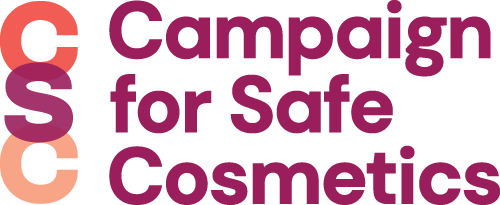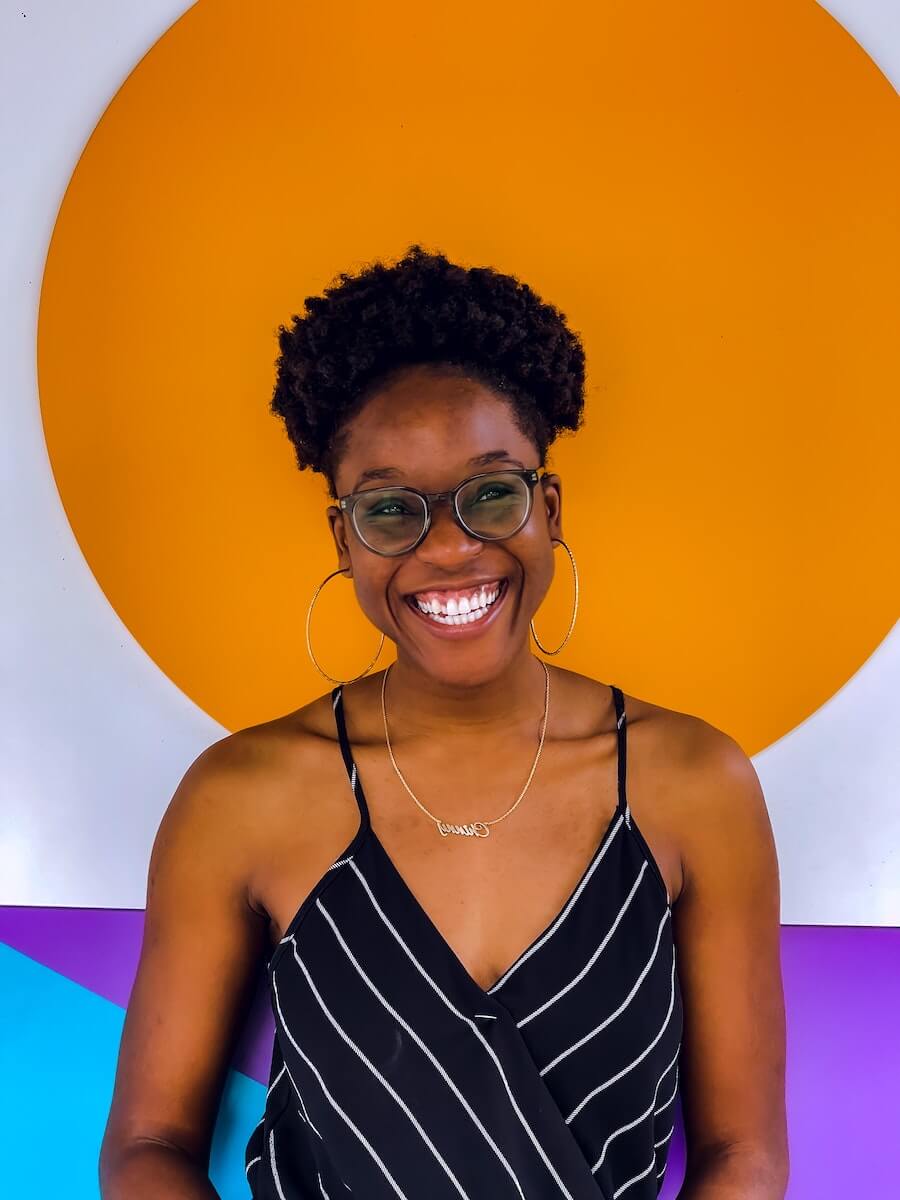[1] DeBard, Amanda. “Black Women in US Most Likely to Die of Breast Cancer.” The Komen Blog. February 12, 2020. Available online: https://blog.komen.org/blog/black-women-in-us-most-likely-to-die-from-breast-cancer/#:~:text=Breast%20cancer%20is%20also%20the%20second%20leading%20cause%20of%20cancer,Black%2FAfrican%2DAmerican%20women. Accessed July 7, 2022.
[2] DeSantis CE, Siegel RL, Sauer AG, et al. Cancer statistics for African Americans, 2016: Progress and opportunities in reducing racial disparities: Cancer Statistics for African Americans, 2016. CA Cancer J Clin. 2016;66:290-308.
[3] Herman-Giddens, Marcia E., et al. “Secondary sexual characteristics and menses in young girls seen in office practice: a study from the Pediatric Research in Office Settings network.” Pediatrics 99.4 (1997): 505-512. https://doi.org/10.1542/peds.99.4.505
[4] Burris, H. H., Lorch, S. A., Kirpalani, H., Pursley, D. M., Elovitz, M. A., & Clougherty, J. E. (2019). Racial disparities in preterm birth in USA: a biosensor of physical and social environmental exposures. Archives of disease in childhood, 104(10), 931–935. https://doi.org/10.1136/archdischild-2018-316486
[5] Osterman M, Hamilton B, Martin JA, Driscoll AK, Valenzuela, CP. Births: final data for 2020. Natl Vital Stat Rep. 2021;70(17):1–50. https://www.cdc.gov/nchs/data/nvsr/nvsr70/nvsr70-17.pdf
[6] Eltoukhi, H. M., Modi, M. N., Weston, M., Armstrong, A. Y., & Stewart, E. A. (2014). The health disparities of uterine fibroid tumors for African American women: a public health issue. American journal of obstetrics and gynecology, 210(3), 194–199. https://doi.org/10.1016/j.ajog.2013.08.008
[7] Fuldeore, Mahesh J., and Ahmed M. Soliman. “Patient-reported prevalence and symptomatic burden of uterine fibroids among women in the United States: findings from a cross-sectional survey analysis.” International journal of women’s health 9 (2017): 403. https://doi.org/10.2147/ijwh.s133212
[8] Whetstone, S., Burke, W., Sheth, S. S., Brooks, R., Cavens, A., Huber-Keener, K., Scott, D. M., Worly, B., & Chelmow, D. (2022). Health Disparities in Uterine Cancer: Report From the Uterine Cancer Evidence Review Conference. Obstetrics and gynecology, 139(4), 645–659. https://doi.org/10.1097/AOG.0000000000004710
[9] Harris, H. R., Guertin, K. A., Camacho, T. F., et al. (2022). Racial disparities in epithelial ovarian cancer survival: An examination of contributing factors in the Ovarian Cancer in Women of African Ancestry consortium. International journal of cancer, 151(8), 1228–1239. https://doi.org/10.1002/ijc.34141
[10] Yang, Lily. “How the Beauty Industry is Hurting Women of Color.” The Daily Californian. March 5, 2021. Available online: https://www.dailycal.org/2021/03/05/how-the-beauty-industry-is-hurting-women-of-color/. Accessed July 7, 2022.
[11] Campaign for Safe Cosmetics. “Laws and Regulations on Chemicals in Cosmetics.” Available online: https://safecosmetics.org/resources/regulations/. Accessed July 7, 2022.
[12] McConnell, Jamie. “Antiquated Law Allows Toxic Chemicals in Cosmetics and Puts Health at Risk.” Women’s Voices for the Earth. July 29, 2021. Available online: https://www.womensvoices.org/2021/07/29/antiquated-law-allows-toxic-chemicals-in-cosmetics-and-puts-health-at-risk/. Accessed July 7, 2022.
[13] International Fragrance Association. “IFRA Transparency List.” https://ifrafragrance.org/initiatives/transparency/ifra-transparency-list. Accessed November 4, 2020.
[14] Bryant, Taylor. “How the Beauty Industry Has Failed Black Women.” Refinery 29. February 27, 2016. Available online: https://www.refinery29.com/en-us/2016/02/103964/black-hair-care-makeup-business. Accessed July 7, 2022.
[15] Harmon, Stephenetta. “Black Consumers Spend Nine Times More In Hair & Beauty.” Hype Hair, February 26, 2018. Available online: https://www.hypehair.com/86642/black-consumers-continue-to-spend-nine-times-more-in-beauty-report/. Accessed July 7, 2022.
[16] Eberle, C. E., Sandler, D. P., Taylor, K. W., & White, A. J. (2020). Hair dye and chemical straightener use and breast cancer risk in a large US population of black and white women. International journal of cancer, 147(2), 383–391. https://doi.org/10.1002/ijc.32738
[17] U.S. Food and Drug Administration. “Prohibited and Restricted Ingredients in Cosmetics.” Available online: https://www.fda.gov/cosmetics/guidanceregulation/lawsregulations/ucm127406.htm. Accessed October 14, 2022.
[18] Huang, Tianyi, et al. “Gender and racial/ethnic differences in the associations of urinary phthalate metabolites with markers of diabetes risk: National Health and Nutrition Examination Survey 2001–2008.” Environmental Health 13.1 (2014): 1-10. https://doi.org/10.1186/1476-069x-13-6
[19] James-Todd, Tamarra M., et al. “Racial and ethnic variations in phthalate metabolite concentration changes across full-term pregnancies.” Journal of exposure science & environmental epidemiology 27.2 (2017): 160-166. https://doi.org/10.1038/jes.2016.2
[20] Calafat, Antonia M., et al. “Urinary concentrations of four parabens in the US population: NHANES 2005–2006.” Environmental health perspectives 118.5 (2010): 679-685. https://doi.org/10.1289/ehp.0901560
[21] Zota AR, 2017: https://doi.org/10.1016/j.ajog.2017.07.020
[22] McDonald JA, 2022: https://ajph.aphapublications.org/doi/full/10.2105/AJPH.2021.306606
[23] American Cancer Society. Cancer Facts & Figures for African American/Black People 2022-2024. Atlanta: American Cancer Society, 2022.
[24] James-Todd, Tamarra, et al. “Childhood hair product use and earlier age at menarche in a racially diverse study population: a pilot study.” Annals of epidemiology 21.6 (2011): 461-465. https://doi.org/10.1016/j.annepidem.2011.01.009
[25] Llanos AAM, 2017: https://doi.org/10.1093/carcin/bgx060
[26] White AJ, 2020: https://doi.org/10.1002/ijc.33413
[27] Coogan PF, 2021: https://doi.org/10.1093/carcin/bgab041
[28] Rao R and Llanos AAM, 2022: https://doi.org/10.1016/j.envres.2021.111863
[29] Binder, A.M., Corvalan, C., Calafat, A.M. et al. Childhood and adolescent phenol and phthalate exposure and the age of menarche in Latina girls. Environ Health 17, 32 (2018). https://doi.org/10.1186/s12940-018-0376-z
[30]Harley, K. G., Berger, K. P., Kogut, K., Parra, K., Lustig, R. H., Greenspan, L. C., Calafat, A. M., Ye, X., & Eskenazi, B. (2019). Association of phthalates, parabens and phenols found in personal care products with pubertal timing in girls and boys. Human reproduction (Oxford, England), 34(1), 109–117. https://doi.org/10.1093/humrep/dey337
[31] Jurewicz, J., & Hanke, W. (2011). Exposure to phthalates: reproductive outcome and children health. A review of epidemiological studies. International journal of occupational medicine and environmental health, 24(2), 115–141. https://doi.org/10.2478/s13382-011-0022-2
[32] Ashrap, P., Sánchez, B. N., Téllez-Rojo, M. M., Basu, N., Tamayo-Ortiz, M., Peterson, K. E., Meeker, J. D., & Watkins, D. J. (2019). In utero and peripubertal metals exposure in relation to reproductive hormones and sexual maturation and progression among girls in Mexico City. Environmental research, 177, 108630. https://doi.org/10.1016/j.envres.2019.108630
[33] Chen, A., Chung, E., DeFranco, E. A., Pinney, S. M., & Dietrich, K. N. (2011). Serum PBDEs and age at menarche in adolescent girls: analysis of the National Health and Nutrition Examination Survey 2003-2004. Environmental research, 111(6), 831–837. https://doi.org/10.1016/j.envres.2011.05.016
[34] Jackson, L. W., Zullo, M. D., & Goldberg, J. M. (2008). The association between heavy metals, endometriosis and uterine myomas among premenopausal women: National Health and Nutrition Examination Survey 1999-2002. Human reproduction (Oxford, England), 23(3), 679–687. https://doi.org/10.1093/humrep/dem394
[35] Johnstone, E. B., Louis, G. M., Parsons, P. J., Steuerwald, A. J., Palmer, C. D., Chen, Z., Sun, L., Hammoud, A. O., Dorais, J., & Peterson, C. M. (2014). Increased urinary cobalt and whole blood concentrations of cadmium and lead in women with uterine leiomyomata: Findings from the ENDO Study. Reproductive toxicology (Elmsford, N.Y.), 49, 27–32. https://doi.org/10.1016/j.reprotox.2014.06.007
[36] Ye, S., Chung, H. W., Jeong, K., Sung, Y. A., Lee, H., Park, S. Y., Kim, H., & Ha, E. H. (2017). Blood cadmium and volume of uterine fibroids in premenopausal women. Annals of occupational and environmental medicine, 29, 22. https://doi.org/10.1186/s40557-017-0178-8
[37] Welch, Barrett M., et al. “Associations between prenatal urinary biomarkers of phthalate exposure and preterm birth: a pooled study of 16 US cohorts.” JAMA pediatrics 176.9 (2022): 895-905.
[38] Wang, Zifan, et al. “Polybrominated diphenyl ethers in early pregnancy and preterm birth: Findings from the NICHD Fetal Growth Studies.” International Journal of Hygiene and Environmental Health 243 (2022): 113978. https://doi.org/10.1001/jamapediatrics.2022.2252
[39] Preston, Emma V., et al. “Endocrine disrupting chemical-associated hair product use during pregnancy and gestational age at delivery: a pilot study.” Environmental Health 20.1 (2021): 1-9. https://doi.org/10.1186/s12940-021-00772-5
[40] James-Todd, Tamarra M., et al. “Pregnancy urinary phthalate metabolite concentrations and gestational diabetes risk factors.” Environment international 96 (2016): 118-126. https://doi.org/10.1016/j.envint.2016.09.009
[41] Cantonwine, David E., et al. “Urinary concentrations of bisphenol A and phthalate metabolites measured during pregnancy and risk of preeclampsia.” Environmental health perspectives 124.10 (2016): 1651-1655. https://doi.org/10.1289/ehp188
[42] Brown-Woodman, P. D., Webster, W. S., Picker, K., & Huq, F. (1994). In vitro assessment of individual and interactive effects of aromatic hydrocarbons on embryonic development of the rat. Reproductive toxicology (Elmsford, N.Y.), 8(2), 121–135. https://doi.org/10.1016/0890-6238(94)90019-1
[43] Labrèche F, Forest J, Trottier M, Lalonde M, Simard R. Characterization of chemical exposures in hairdressing salons. Appl Occup Environ Hyg. 2003;18(12):1014–1021. doi: 10.1080/10473220390244667.
[44] Pak VM, Powers M, Liu J. Occupational chemical exposures among cosmetologists: risk of reproductive disorders. Workplace Health Saf. 2013;61(12):522–528. doi: 10.1177/216507991306101204
[45] Dodson RE, 2021: https://doi.org/10.1038/s41370-021-00327-3
[46]Preston, Emma V., et al. “Socioeconomic and racial/ethnic differences in use of endocrine-disrupting chemical-associated personal care product categories among pregnant women.” Environmental Research 198 (2021): 111212. https://doi.org/10.1016/j.envres.2021.111212
[47] James-Todd, Tamarra, et al. “Hormonal activity in commonly used Black hair care products: evaluating hormone disruption as a plausible contribution to health disparities.” Journal of exposure science & environmental epidemiology 31.3 (2021): 476-486. https://doi.org/10.1038/s41370-021-00335-3















